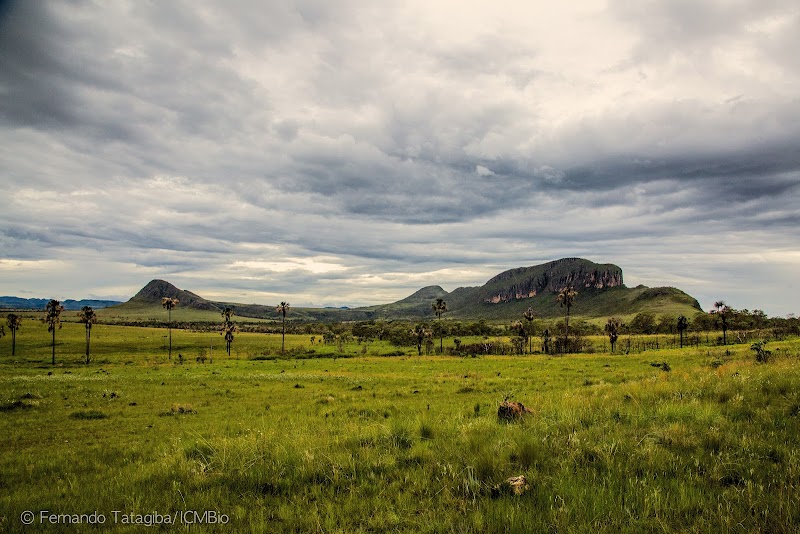
Festival de Cultura do Tocantins: A Vibrant Celebration in Gurupi
Festival de Cultura do Tocantins in Gurupi is a lively celebration of indigenous heritage, local music, and traditional crafts. Experience vibrant performances, engage with hands-on workshops, and taste authentic regional cuisine in an event that pulses with the heart of Tocantins culture.
Wear Breathable Footwear
Opt for sturdy, breathable shoes to manage the mix of walking on pavement and uneven festival grounds. This keeps feet comfortable through long days of activity.
Stay Hydrated
Bring a refillable water bottle. The tropical heat and busy festival atmosphere can quickly dehydrate you.
Arrive Early
Beat the crowds by exploring markets and quieter venues in the morning before main performances start.
Use Local Transportation
Gurupi’s streets fill rapidly. Using local buses or taxis minimizes stress and maximizes festival time.
Festival de Cultura do Tocantins: A Vibrant Celebration in Gurupi
Every year in Gurupi, Tocantins, the Festival de Cultura do Tocantins awakens the city with a raw surge of energy and cultural pride. This festival is a bridge between traditional indigenous heritage, Afro-Brazilian rhythms, and contemporary art, offering a full spectrum of creative expression. Visitors find themselves walking through lively streets where colors shout from craft stalls and music dares feet to move against the pulse of the sultry air.
The festival typically runs for several days in July, making Gurupi a magnet for locals and tourists alike. The sounds of samba, carimbó, and forró are not background noise but active participants in the city’s heartbeat. Artisans work visibly beside musicians and dancers, inviting onlookers to both observe and become part of the celebration.
Planning a visit means preparing for more than just a cultural show; it is about engaging with a fiercely alive setting. The event occupies various venues across Gurupi, including public squares, community centers, and outdoor stages. The geography of these locations is walkable but calls for practical footwear and readiness for the tropical heat, as crowds and humidity build with the day’s excitement.
For the adventurous, Festival de Cultura do Tocantins offers more than performances. Workshops invite hands-on learning in traditional crafts and music styles—challenge yourself to capture the rhythm instead of just watching. Culinary stands tempt with regional flavors, grounding the celebration in the tastes and aromas decisive to Tocantins culture.
To make the most out of this experience, consider arriving early in the day to explore quieter spots like local markets before the crowds ripple through the streets. Stay hydrated; the combination of lively movement and tropical weather can wear down stamina quickly. Night performances often reveal a different energy, sharpened and intensified under starry skies.
This event demands respect for the cultural expressions fiercely held by each performer, artisan, and participant. It’s a reminder that adventure isn’t only about nature’s challenge but about navigating vibrant human landscapes with openness and curiosity. In Gurupi during the Festival de Cultura do Tocantins, culture is a terrain—specific, textured, and thrillingly alive.
Nearby Trips
All Adventures
Boat Charters
Water Activities
Adventures near Gurupi, Tocantins
Discover the unique and memorable adventures that make Gurupi, Tocantins special.
Frequently Asked Questions
What types of performances can I expect at the festival?
You’ll experience a mix of traditional music genres like samba and carimbó, dance performances, and theatrical displays that showcase indigenous and Afro-Brazilian culture. The lineup also includes modern interpretations blending contemporary and folkloric styles.
Are workshops open to festival visitors?
Yes, the festival offers interactive workshops on traditional crafts, music, and dance. These sessions provide hands-on opportunities to learn from local artists and immerse yourself practically in the culture.
Is the festival suitable for families?
Absolutely. The festival has family-friendly events and activities during the day, though some evening shows may be more suitable for older audiences.
What local dishes should I try during the festival?
Look for regional specialties like peixe na folha de bananeira (fish wrapped in banana leaf), farinha de mandioca (cassava flour), and delicious tropical fruits. Street food stalls often feature freshly prepared traditional snacks and meals.
Where can I find quieter spots to rest during the festival?
Nearby public parks and smaller community centers host less crowded exhibits and events, offering a chance to recharge amid the bustling main venues.
Is it safe to explore Gurupi during the festival?
Gurupi is generally safe, especially in festival zones, but standard precautions apply. Stay aware of your belongings and avoid poorly lit or isolated areas after dark.
Recommended Gear
Breathable Walking Shoes
Lightweight shoes with grip help with walking on mixed surfaces and protect feet during long festival days.
Reusable Water Bottle
Staying hydrated is crucial in the tropical heat, especially when moving between venues.
Lightweight Rain Jacket
Useful during unexpected tropical showers common in this season.
Sun Hat and Sunscreen
Protects from the intense sun during outdoor festival events.
Local Insights
Hidden Gems
- "Praça Zeca Paes is a quiet park offering reflection space near busy festival areas."
- "Small local galleries in the city center feature emerging artists alongside festival activities."
Wildlife
- "Keep an eye out for native birds like the toco toucan, which often appears near Gurupi’s greener spaces during early morning and dusk."
History
"Gurupi’s Festival de Cultura celebrates Tocantins’ diverse cultural roots, emphasizing the blend of indigenous, Afro-Brazilian, and settler influences dating back to the early 20th century."
